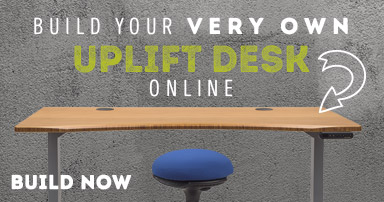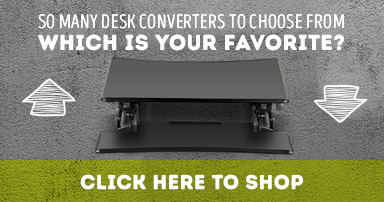Sustainable Design Leaders in Ergonomics
Posted by Human Solution on Aug 19th 2010
“Green” is a buzzword throughout every industry. As a retailer of disposable goods, we are ultimately more concerned with sustainability than trendy environmental marketing. Sustainable design, like ergonomic design, ismoral design. It is design from a “do no harm” perspective. This perspective causes designers to focus on longer timescales that consider cost over the entire life of the product. In furniture design I view these costs as threefold: initial costs, lifetime service and disposal. Two manufacturers we see leading the way are Steelcaseand Humanscale.
Initial Costs
When considering initial costs, sustainable design does not just consider the parts and labor associated with product cost. The energy used to produce, pack and ship your new ergonomic product also factor into the total carbon footprint, and therefore the total cost (both environmental and financial.) One way Humanscale addresses this concern is by using 100% recycled aluminum. Reusing aluminum saves 95% of the energy and CO2 emissions expended by creating virgin aluminum. Imagine if all new processes could reduce manufacturing energy expenditures to just 5% of their current levels!
Many incentive programs exist to encourage these considerations throughout the design process. One of the most prominent is LEED certification. LEED stands for Leadership in Energy & Environmental Design and is effectively a green building certification system that rates a building’s energy efficiency. A 2003 study of 60 LEED buildings indicated 25% to 30% greater energy efficiency when compared to traditional buildings. By designing to these specifications many state and federal agencies grant significant tax breaks, cuts in energy costs and other financial benefits. While LEED certification requires significant investments beyond the selection of furniture, both Steelcase and Humanscale offer a wide variety of sustainably designed ergonomic products that help contribute to LEED certification.
Lifetime Service
When we buy a new chair or keyboard tray, the most obvious concern is the lifetime service of a product. Sustainable design takes this seriously. For example, a $100 chair from your local office store will cost less initially, but the marginal quality may require you to replace the chair every 2-3 years. By contrast, the superior build quality of Humanscale and Steelcase chairs, combined with their well-backed extended warranties, means that you can easily count on your chair for a decade or more. This fact alone should allow most people to consider a greater initial investment in sustainably designed products in exchange for longer product life.
Disposal
Finally, any consumable product must eventually be retired. Sustainable products factor this aspect of the life cycle into the original design in order to minimize waste. This is known as Cradle to Cradle design, and C2C certification is one of the most stringent environmental design certifications available. Cradle to Cradle certification is essentially a holistic framework that seeks to create design and manufacturing systems that are efficient and essentially waste free. Steelcase happens to offer more Cradle to Cradle certified products than any other company, in any industry, in the world. These C2C certified offerings include the Leap chair, Amia chairand Think chair. In fact, the Steelcase Environmental Partnership Program helps customers identify end-of-use options and dispose of their Steelcase products properly.
Learn More
Want to learn more on sustainable design? Check out the sustainability websites by Steelcase andHumanscale. For further reading I recommend William McDonough’s book Cradle to Cradle: Remaking the Way We Make Things.
Interested in earning points towards your projects LEED certification? Contact our sales team to find out how Steelcase and Humanscale products can help.




